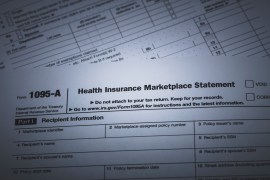Treating skinned knees and stomachaches is part of the drill at any school nurse’s office or school-based health center. But for many kids, health-care providers at these sites do much more than treat everyday aches and pains: They give checkups and vaccinations, make sure kids take their insulin shots and antidepressants on time, and teach them how to manage chronic conditions such as asthma.
Last week’s announcement of $95 million in grants to 278 school-based health centers is the first installment of a $200 million appropriation under the 2010 health care law.
More From This Series Insuring Your Health
The money will help bolster the unique role that school-based health-care providers play in children’s lives, say experts. “You get to see things that you just can’t see in a private doctor’s office when a parent brings them in,” says Veda Johnson. A pediatrician and longtime advocate for school-based health centers, Johnson directs the Urban Health Program at Atlanta’s Emory University that aims to expand such centers in Georgia.
Next summer, the next round of funds are expected to be distributed, says Linda Juszczak, executive director of the National Assembly on School-Based Health Care, a Washington-based advocacy group. However, given ongoing political and budgetary challenges, the remaining funds could be at risk, she says. “We’ll do everything in our power to ensure that it remains safe.”
Fragmented Care
School-Based Health Care
Michelle Andrews talks about the state of health care in schools:
School-based health centers go beyond the services of a school nurse. They are clinics that provide primary care to students, and often mental health and dental care as well. These facilities often also provide reproductive health services to middle and high school students; some offer birth-control services. Typically located in medically under-served urban areas, school-based health centers are relatively rare: Only about 1,900 of the roughly 133,000 schools across the country have them. Funding is often cobbled together from a variety of sources, including community-based health centers, health-care systems, foundation grants, and state and local funds.
Generally, school-based health centers supplement the care that children receive from their regular pediatrician, if they have one. Over the years some pediatricians have expressed concern that the clinics could disrupt their relationships with families and lead to fragmented care, says Robert Murray, who recently served as chair of the Council on School Health for the American Academy of Pediatrics. But many kids who go through school-based health centers “are not otherwise connected to a health-care provider,” he says.
For some kids, in fact, their school clinic doctor or nurse practitioner is their primary health-care provider, caring for them even after they move on to another school.
That’s the way it is at the four elementary school clinics operated by HEALS (Health Establishments at Local Schools) in Huntsville, Ala. Starting with a well-child visit at the beginning of the school year, clinic staff keep regular tabs on the kids, providing vaccinations and treatment for everything from allergies to strep throat. Even after they leave elementary school, the kids come back for care, usually until they reach age 19. “We are the medical home for our children,” says Connie Carnes, executive director for HEALS, which received $313,107 in grants that it will use to build two new health centers, an electronic medical records system and other projects.
For working parents, especially the working poor, having children’s medical needs taken care of at school makes sense and is more cost-effective for the health-care system overall, says Carnes.
“If you have a job as a maid, it’s hard to get time off for a doctor’s appointment,” she explains. “Sniffles shouldn’t have to be treated in the emergency department.”
‘The Primary Contact’
Even after the $200 million cash infusion, school-based health centers will still be few and far between. Most students are more likely to see a school nurse if they need medical care. But school nurses aren’t as plentiful as some advocates would like. About half of public schools have a full-time nurse, and three-quarters have one at least part time. As state and local budget problems continue, school nurse positions are sometimes on the chopping block.
Only 15 states and the District of Columbia have one nurse for every 750 students, a standard that advocates consider optimal for a school with kids who have average medical needs. And unfortunately, there is an increasing number of students who require special medical attention on a daily basis: kids with cancer, heart disease, severe allergies and more. For these students, “the school nurse is the primary contact,” says Murray.
On a typical school day, school nurse Sandi Delack sees 40 to 50 students at Ferri Middle School in Johnston, R.I. Five to 10 of the visits are for injuries, such as a finger slammed in a locker. Up to half of the visits are for emotional or mental health problems that present as physical maladies.
“They have a headache or a stomachache, and you find out they have issues at home or problems in school,” says Delack.
Last school year, Delack also oversaw eight children who had to take daily medication, mostly for conditions such as attention-deficit hyperactivity disorder, depression or anxiety. She also saw four with diabetes who needed to check their blood sugar and take insulin shots or adjust an insulin pump.
Bailey Brayton, a seventh-grader who received a diagnosis of Type 1 diabetes about six years ago, was one of her daily visitors. When he arrived, he would pull out the plastic container containing his insulin, test strips, test kit and snacks. Although he could inject himself, Delack was there to oversee the process and decide if an abnormal glucose reading warranted a call to his parents.
Bailey is more self-sufficient now than when he was younger, but his mom, Jessica Brayton, is grateful to have a trained medical professional on hand at school. “If there was no nurse, I’d have to oversee it,” she says. “It’s like having a second mom at school.”







